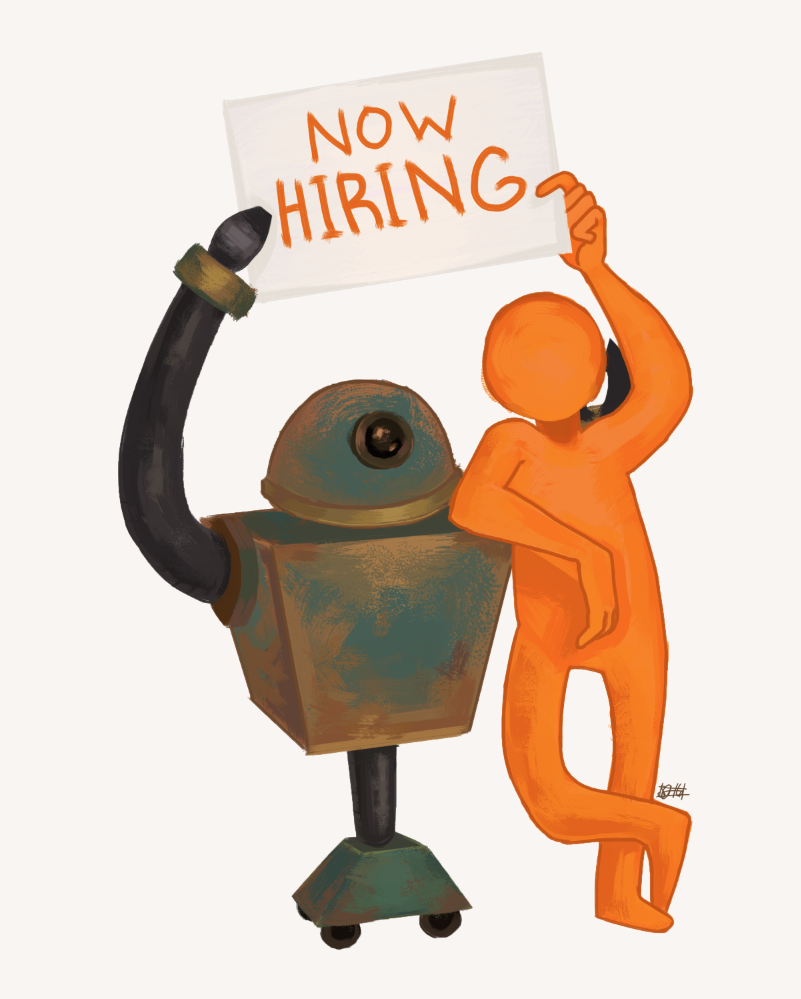It's a wonder we don't just let machines do all the hard work for us, especially since the capabilities of artificial intelligence and robotics are steadily advancing beyond the abilities of the average person. However, machines are already starting to take care of a lot more than you might expect.
“Automation is, essentially, taking the human out of the loop,” explained Agamemnon Crassidis, professor of Mechanical Engineering in the Kate Gleason College of Engineering. Crassidis works with unmanned drones, but they are hardly the only examples of automated technology. From self check-in kiosks at airports to self-checkout stations at supermarkets, if it doesn’t require a human element, then it’s an example of automation at work.
Automated technologies help make our lives easier, but they do seem to come at a cost. After all, doesn't it make economic sense to hire a bank teller when an ATM can do the same job and more for 24 hours without pay? People may fear automation because they only see the potential repercussions to the job market, but there is good reason to believe that its overall effects would actually be mostly beneficial.
Droning On
"I fully believe that the next big economic driver is [going to] be drones,” said Crassidis. Drones have seen a lot of news coverage in recent years, usually concerning military use or laws restricting their usage. However, it’s the commercial use of drone technology that Crassidis foresees shaping the future. For example, he explained how a drone could be used to survey a farm quicker than a human by collecting data from the air. One might think this highlights how machines may replace workers, but in reality such technology opens more doors than it closes.
This is evident within the near future that Crassidis envisions. "The economic benefit of having drones far outweighs what jobs are going to be lost through automation," he said. "People [will] need to make drones, people [will] need to analyze data that's coming from the drones."
Current students at RIT may be well-positioned to be those individuals. Classes like Crassidis’s Nonlinear Controls allow students to learn more about autonomous control systems. With new technology always comes new skills to learn, and similarly, new jobs to fill. "When one industry fails, another industry comes up into place,” said Crassidis. “People need to make the automation devices and also maintain those devices."
Automation: How it Can Help
Crassidis highlighted a number of ways automation could be of great societal benefit. He recalled his experience working on a project called the "Automatic Highway System," in which cars analyze traffic patterns and drive passengers to their destinations autonomously. Automated cars can react much faster than humans and don’t get distracted, and can therefore be safer at higher speeds. Travel would be much faster and optimized to have far more cars on the road.
Students at RIT have worked with the technology behind automated driving themselves. RIT's own "Autonomous People Mover" project, which Reporter featured in an issue last May, features a driverless golf cart developed by a team of RIT students from a host of different engineering majors. The Reporter article can be accessed on our website, reporter.rit.edu.
A. Erhan Mergen, a professor of decision sciences at the Saunders College of Business, spoke about some of the benefits of automation from the perspective of operations managers. He noted that automation typically adds an advantage in speed and volume. More can be produced in shorter amounts of time, which in turn improves productivity. Organizations commonly compete in terms of productivity, so the prospect of automation can be enticing.
Mergen also explained that the consistency automation can provide may lead to overall higher quality goods. An up-to-date automated system makes far fewer errors than a human. Consistency also helps decrease variation. "Less variation means less uncertainty, which is a good thing for the managers,” said Mergen. “When you have less uncertainty you can plan for the future better in terms of future output, in terms of future capacity, et cetera."
Potential Problems
"There's no such thing as a perfect system,” said Mergen. “You gain something and you may pay the price someplace else.” He explained that there are a few problems associated with removing the human element from certain processes. “Replacing human labor is a social cost which may lead to unemployment,” said Mergen. However, like Crassidis, he pointed out that automation forces people to learn new skills to take up new positions.
In terms of cost, eliminating workers might not necessarily mean saving money. Depending on the specific needs of an organization, building and maintaining an automated system may be more expensive than it's worth. On top of that, such systems need to be upgraded constantly to keep up with current technology, which further adds to the cost.
Mergen mentioned that some organizations may be at a disadvantage by lacking a human touch. Additionally, if the autonomous system is not built to be flexible, one might not be able to produce a large variety of products.
Adapting for the Future
Things are changing fast according to Mergen. The way that data is generated and analyzed changes as automation technology advances, and RIT students will need to adapt if they want to take advantage of new opportunities.
“If [students] have the skills to be ready to deal with the new challenges, they have the proper skills to know how to adapt to that technology, how to evaluate with this technology,” he said.
Being able to adapt to an ever-changing technological landscape could be crucial for any RIT student or graduate pursuing a job. “Technology is everywhere, there is no escape from this,” said Mergen. “Every firm has to rely on technology to some extent to get their job done and to improve productivity.” It's up to RIT students to take advantage of the opportunity.








